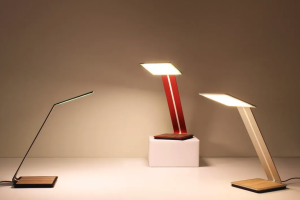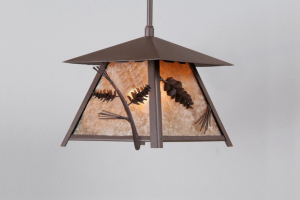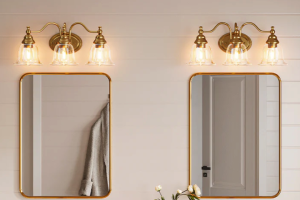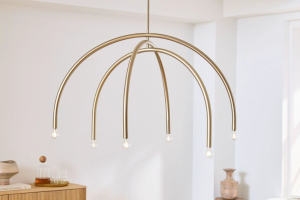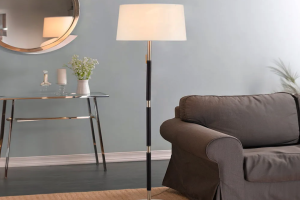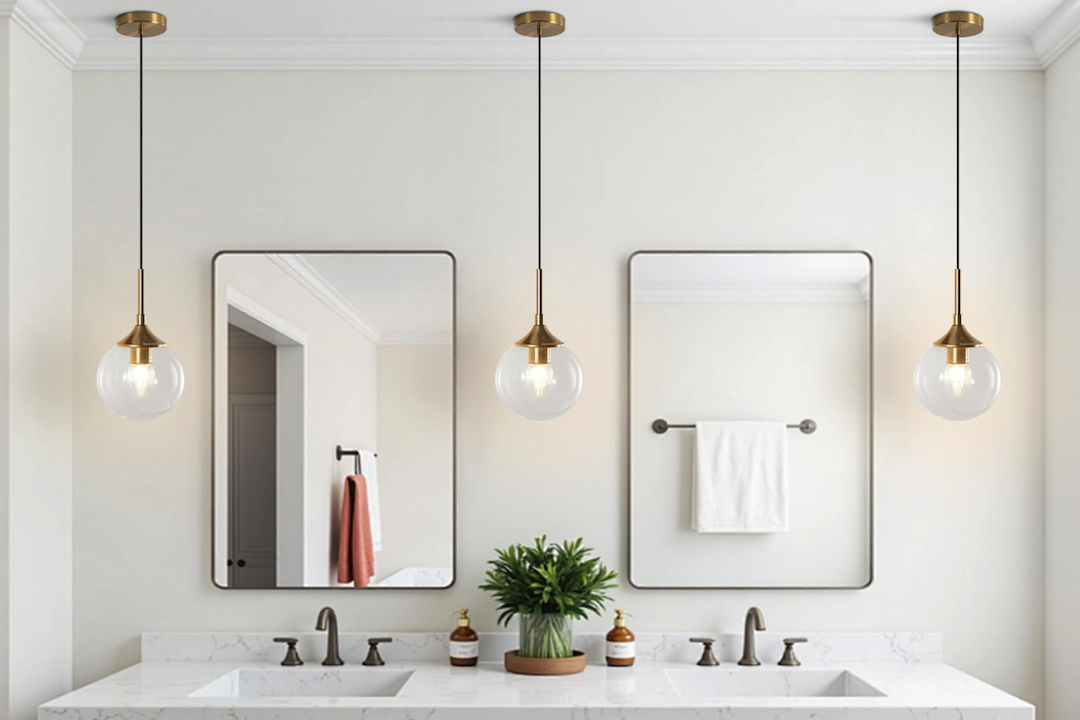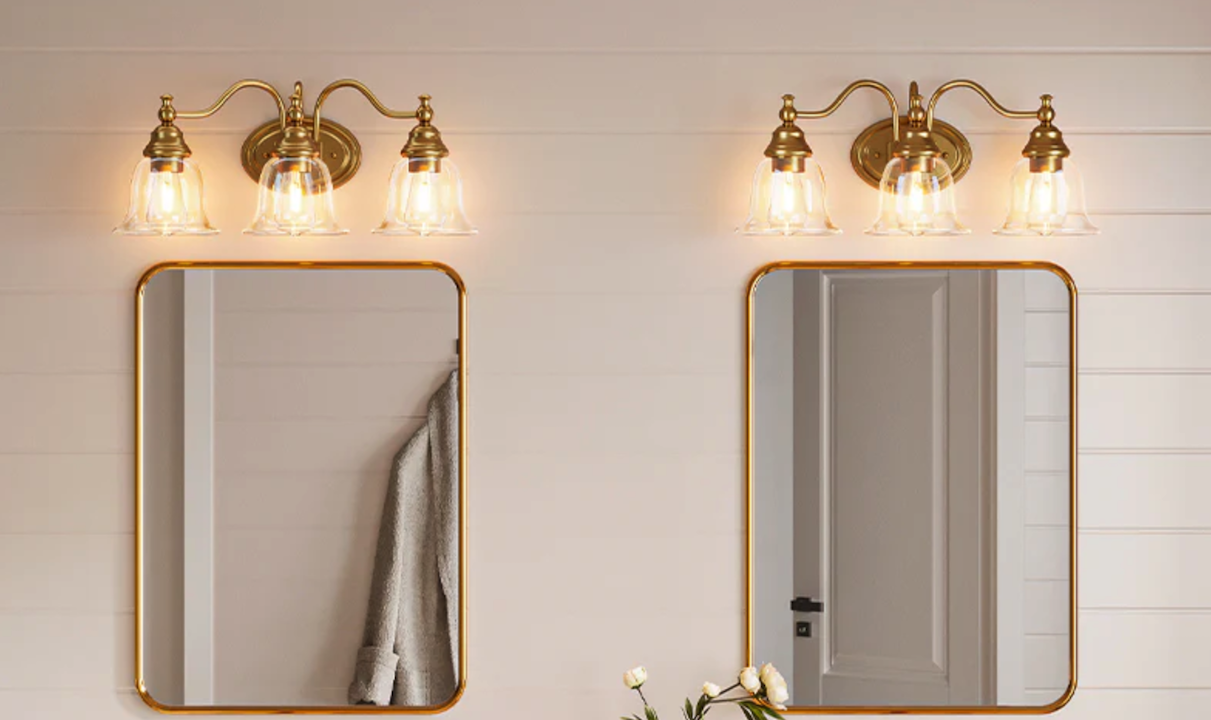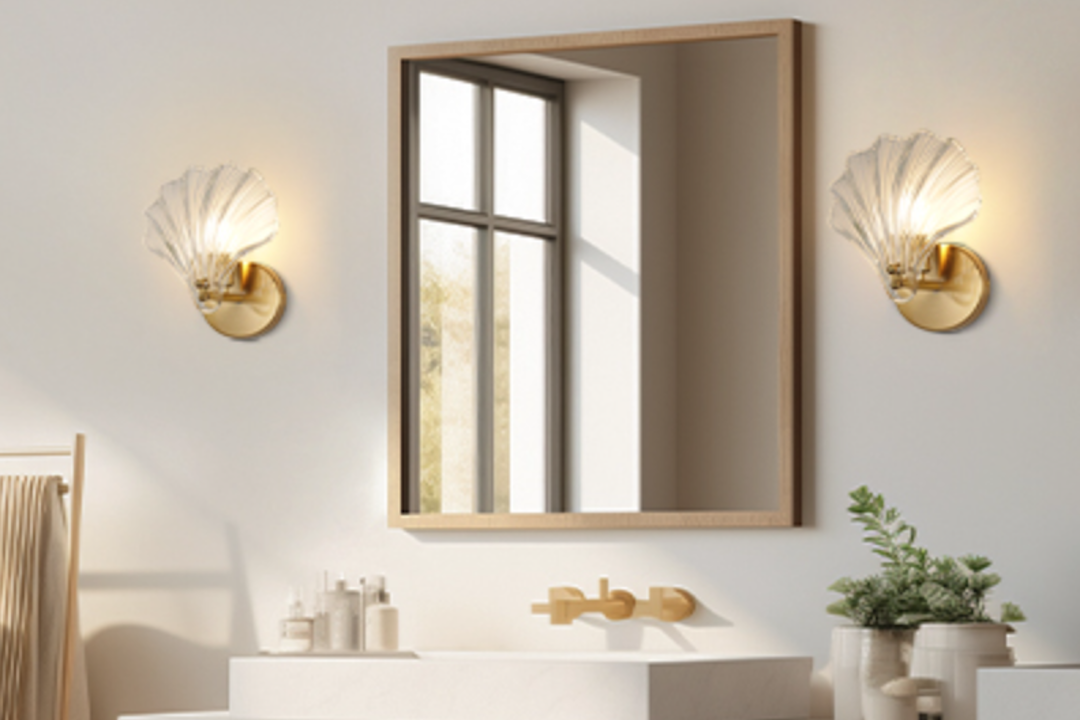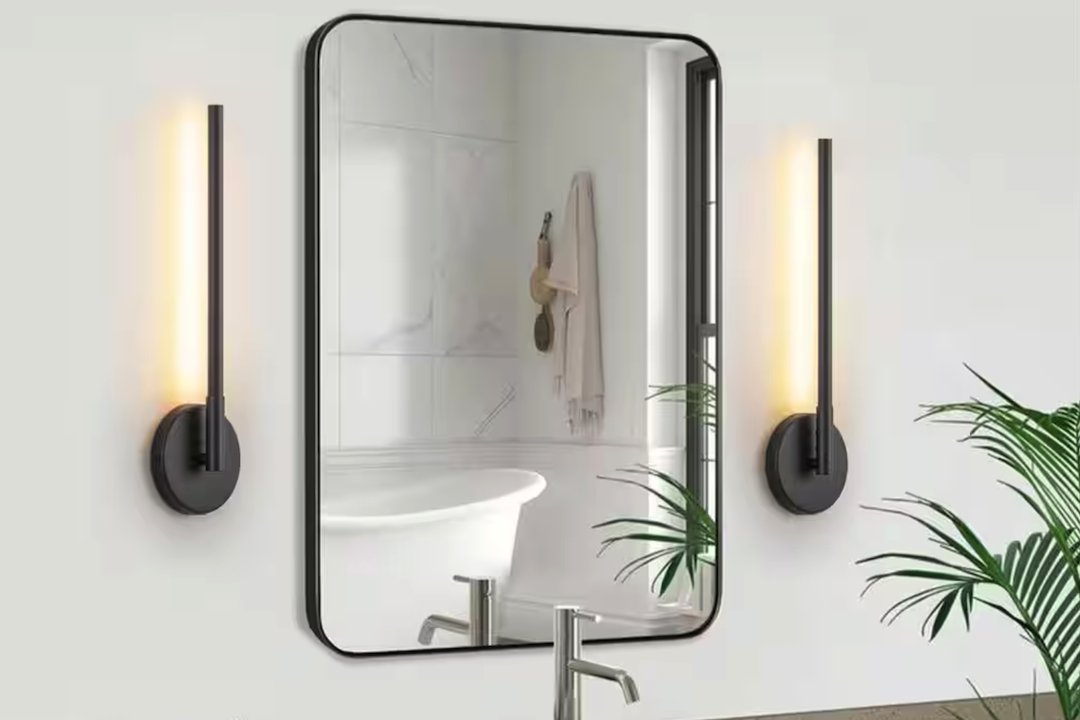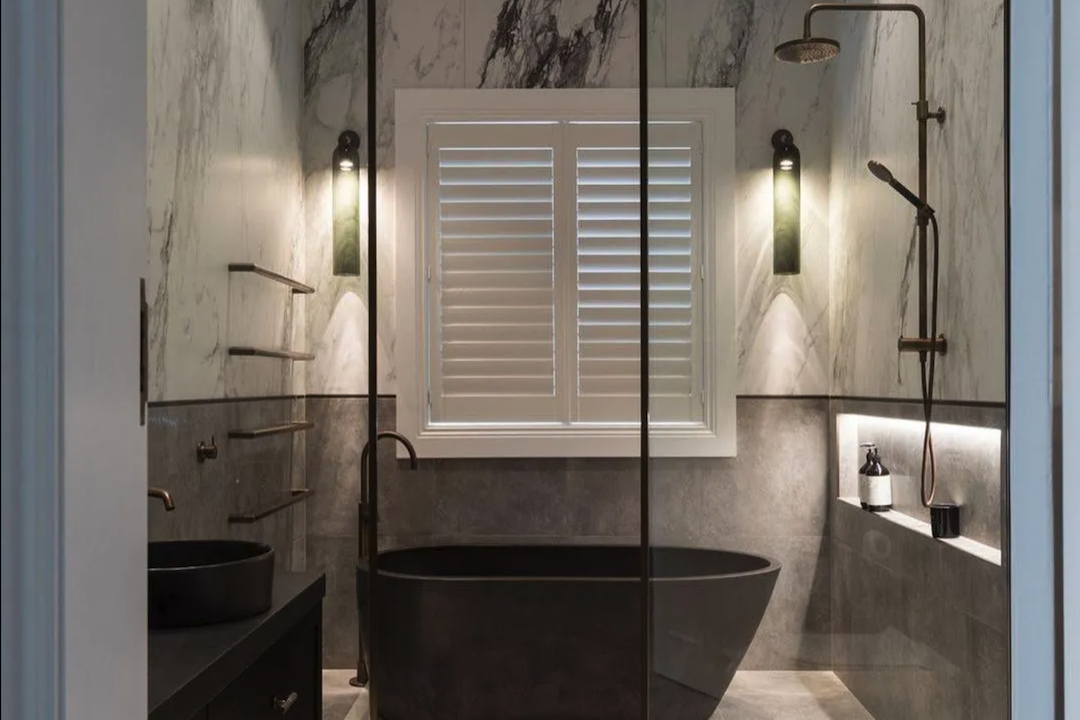Lighting plays a pivotal role in the overall functionality and aesthetic appeal of a bathroom. Unlike other rooms in a home, bathrooms require a unique blend of bright, task-oriented lighting and softer, ambient illumination. The right lighting can enhance the space, making it feel larger and more inviting while also ensuring that essential tasks, such as grooming and applying makeup, can be performed with precision.
Poor lighting Zomier can lead to shadows and unflattering reflections, which can be particularly problematic when using mirrors. Therefore, understanding the importance of lighting in this intimate space is crucial for both practical and design purposes. Moreover, the bathroom is often a sanctuary for relaxation and self-care.
The right lighting can transform a mundane routine into a soothing experience. For instance, bright lights can energize the space during the morning rush, while softer, warmer tones can create a calming atmosphere for evening baths or skincare rituals. The interplay of light not only affects visibility but also influences mood and perception.
A well-lit bathroom can evoke feelings of cleanliness and tranquility, making it an essential aspect of home design that should not be overlooked.
Choosing the Right Ceiling Lamp
Selecting the appropriate ceiling lamp for your bathroom involves considering several factors, including size, style, and functionality. The size of the lamp should be proportionate to the dimensions of the room; a small fixture in a spacious bathroom may appear lost, while an oversized lamp in a compact space can overwhelm the area. Additionally, the height at which the lamp is installed is crucial.
A fixture that hangs too low may obstruct movement or create an unwelcoming atmosphere, while one that is too high may fail to provide adequate illumination. Style is another critical consideration when choosing a ceiling lamp. Bathrooms often serve as a reflection of personal taste, and the lighting fixture should complement the overall design theme.
For instance, a sleek, modern pendant light can enhance a contemporary bathroom, while a vintage chandelier may add charm to a more traditional space. Furthermore, functionality should not be neglected; selecting a lamp that offers sufficient brightness and is resistant to humidity will ensure longevity and effectiveness. LED fixtures are increasingly popular due to their energy efficiency and long lifespan, making them an excellent choice for bathroom lighting.
Installing the Ceiling Lamp
The installation process for a ceiling lamp in the bathroom requires careful planning and adherence to safety standards. Before beginning, it is essential to turn off the power supply to avoid any electrical hazards. This can typically be done at the circuit breaker.
Once the power is off, removing the old fixture (if applicable) involves unscrewing it from the ceiling and disconnecting the wiring. It is advisable to take note of how the previous fixture was connected to ensure proper installation of the new lamp. When installing the new ceiling lamp, it is crucial to follow the manufacturer’s instructions meticulously.
This usually involves connecting wires according to color codes—black (or red) for live wires, white for neutral, and green or bare for ground. After securing the connections with wire nuts, the fixture can be mounted to the ceiling bracket. Ensuring that all screws are tightened properly will prevent any wobbling or falling over time.
Once installed, restoring power allows for testing the fixture to confirm that it operates correctly and provides adequate illumination.
Creating a Relaxing Ambiance
Creating a relaxing ambiance in the bathroom goes beyond mere functionality; it involves crafting an environment that promotes tranquility and comfort. One effective way to achieve this is through layered lighting. Combining different sources of light—such as ceiling fixtures, wall sconces, and accent lights—can create depth and warmth in the space.
For example, wall sconces flanking a mirror can provide flattering light for grooming tasks while also contributing to an overall soothing atmosphere. In addition to layering light sources, incorporating warm color temperatures can significantly enhance relaxation. Soft white or warm white bulbs (ranging from 2700K to 3000K) emit a gentle glow that mimics natural light during sunset, promoting a sense of calmness.
Furthermore, adding elements such as candles or LED strip lights around bathtubs or under vanities can introduce soft illumination that enhances the spa-like feel of the bathroom. These subtle touches not only elevate aesthetics but also create an inviting space where one can unwind after a long day.
Using Dimmer Switches for Adjustable Lighting
Dimmer switches are an invaluable addition to bathroom lighting systems, offering flexibility that caters to various needs throughout the day. By allowing users to adjust brightness levels, dimmers enable a seamless transition from bright task lighting during morning routines to softer illumination for evening relaxation. This adaptability is particularly beneficial in multifunctional spaces like bathrooms where different activities require varying levels of light.
Installing dimmer switches is relatively straightforward and can often be done as a DIY project with basic electrical knowledge. It involves replacing standard switches with dimmer models and ensuring compatibility with existing light fixtures. Many modern dimmers are designed to work with LED bulbs, which are commonly used in bathrooms due to their energy efficiency and longevity.
The ability to control light intensity not only enhances comfort but also contributes to energy savings by reducing electricity consumption when full brightness is unnecessary.
Adding Decorative Elements
Incorporating decorative elements into bathroom lighting can significantly enhance its visual appeal while reflecting personal style. Decorative fixtures such as chandeliers or artistic pendant lights can serve as focal points that draw attention and elevate the overall design aesthetic. For instance, a vintage-inspired chandelier can add elegance to a classic bathroom, while a sleek modern pendant might suit a contemporary space perfectly.
Beyond fixtures, decorative elements can also include lighted mirrors or backlit vanities that combine functionality with style. These features not only provide essential illumination but also contribute to an upscale look that enhances the bathroom’s ambiance. Additionally, using colored bulbs or smart lighting systems allows homeowners to experiment with different hues and effects, creating unique atmospheres tailored to specific moods or occasions.
Maintaining a Clean and Well-Lit Space
A clean and well-lit bathroom is essential for both hygiene and aesthetics. Regular maintenance of lighting fixtures ensures they remain functional and visually appealing over time. Dust and moisture can accumulate on light fixtures, diminishing their brightness and creating an unkempt appearance.
Periodic cleaning with appropriate materials—such as microfiber cloths for glass fixtures—can help maintain clarity and shine. Furthermore, ensuring that bulbs are replaced promptly when burnt out is crucial for maintaining consistent lighting levels. Keeping spare bulbs on hand can facilitate quick replacements without disrupting daily routines.
Additionally, checking for any signs of electrical issues—such as flickering lights or buzzing sounds—should be part of regular maintenance practices. Addressing these concerns promptly not only ensures safety but also preserves the integrity of the lighting system.
Final Touches and Personalization
The final touches in bathroom lighting design allow homeowners to infuse their personality into the space while enhancing its functionality. Personalization can be achieved through various means, such as selecting unique light fixtures that resonate with individual tastes or incorporating themed decor elements that reflect personal interests or experiences. For instance, if someone has a penchant for coastal themes, incorporating nautical-inspired fixtures or using blue-tinted bulbs can create an inviting beach-like atmosphere.
Alternatively, integrating smart home technology allows for personalized control over lighting settings through mobile apps or voice commands, adding convenience alongside style. Ultimately, these final touches transform a standard bathroom into a personalized retreat that caters to both practical needs and aesthetic desires, making it a true reflection of its owner’s lifestyle and preferences.

